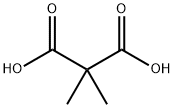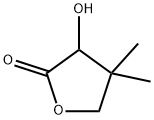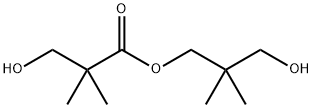
2,2-Dimethyl-1,3-propanediol synthesis
- Product Name:2,2-Dimethyl-1,3-propanediol
- CAS Number:126-30-7
- Molecular formula:C5H12O2
- Molecular Weight:104.15

50-00-0
840 suppliers
$10.00/25g

78-84-2
357 suppliers
$10.00/25mL

126-30-7
602 suppliers
$8.00/100g
Yield:126-30-7 99%
Reaction Conditions:
with hydrogen;nickel;triethylamine;calcium hydroxide at 90 - 180; under 750.075 - 75007.5 Torr;Temperature;Reagent/catalyst;Pressure;
Steps:
4.1; 4.2; 4.3; 4.4 Example 4 A method for continuously producing neopentyl glycol, comprising the following steps:
1.Formaldehyde, isobutyraldehyde and triethylamine were mixed into the reactor at a molar ratio of 1:1:0.03, and a condensation reaction was carried out at a temperature of 90 ° C and a pressure of 100 kPa.2.The resulting mixture was condensed in a fixed bed reactor equipped with a Ca(OH) 2 catalyst, and the resulting solution containing 90% by weight of HPNE was passed into a storage tank.3.The HPNE solution was fed into a reflux reactor containing NPG using a feed pump, the catalyst being Raney nickel (the nickel content of the catalyst was 95% by weight).The hydrogenation reaction is carried out at 180 ° C and 10 MPa,Until the NPG content in the circulating fluid is 97.5% wt.4.The reaction product is separated by a cross-flow filter.The circulating fluid and supernatant quality ratio of the control filter is controlled at 200,The circulating liquid containing the catalyst is refluxed to the loop reactor,The supernatant was separated and rectified to obtain neopentyl glycol (NPG).The final yield of NPG was calculated to be 99% based on isobutyraldehyde.
References:
CN108623437,2018,A Location in patent:Paragraph 0028; 0029; 0030; 0031; 0034; 0035; 0036; 0037

597-31-9
134 suppliers
$19.00/5g

126-30-7
602 suppliers
$8.00/100g

595-46-0
250 suppliers
$5.00/1g

126-30-7
602 suppliers
$8.00/100g

79-50-5
246 suppliers
$21.21/10gm:

126-30-7
602 suppliers
$8.00/100g

50-00-0
840 suppliers
$10.00/25g

78-84-2
357 suppliers
$10.00/25mL

1115-20-4
107 suppliers
$29.00/25g

126-30-7
602 suppliers
$8.00/100g